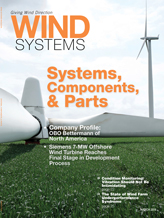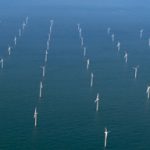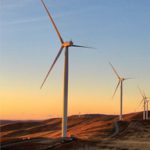Twenty years ago, onshore wind was a minor player that only had specific niches for roles such as small-scale off-grid installations. It now generates 10 to 20 percent of electricity supply in many countries with offshore wind capacity growing rapidly around the globe. Many countries plan to increase their electricity generated from wind power to improve energy security and lower CO2 emissions. The largest growth area has been in Europe, although both China and the United States now account for the majority of installed turbines worldwide. Interest in and the deployment of wind energy has also grown in other parts of the world, including India and South America.
Innovation has played a crucial role in making this achievable, and new developments in wind technology have helped the sector mature over the past 30 years. The basic design of most turbines has remained constant over this period – primarily horizontal axis turbines on top of a tower with variations on scale and installation techniques between offshore and onshore. A range of innovations have helped improve this basic design and move the sector forward, leading to substantial inroads in conventional power generation. Some innovations included the development of sophisticated design software that enables wind farms to be built more cost effectively and maximize their efficiency. Research on effective engagement strategies with the public has also streamlined planning processes, and well-situated turbines have improved levels of public acceptance of the technology. More cost- and time-efficient methods to erect turbines and the capacity necessary to build larger turbines have also reduced costs through larger economies of scale and by having machines that can generate larger amounts of power.
There are a number of factors that will affect the specific technological developments that may arise within a market. The geography of a country is one that can affect the nature of innovation. For example, China is currently increasing its wind energy generation capacity for a combination of energy security and environmental reasons. As a physically large country, it is primarily installing onshore wind farms using widely tested technologies on a large scale in sparsely populated regions. Japan is also looking to increase the proportion of its energy generated from renewables for environmental and energy security reasons, but it is far more densely populated. Japan also lacks large areas for onshore wind farm development or shallow seas in its territorial waters in which to build offshore wind turbines. As a result, Japan has become one of the nations that is pioneering research into floating offshore wind turbines to exploit the resource despite its geographical restrictions.
Countries can also become innovative in certain technologies for somewhat counterintuitive reasons. The United Kingdom, for example, is a leading developer of offshore wind power. Though the country has ideal topography for onshore wind installations, offshore currently receives far greater government support due to concerns such as the aesthetic impact of onshore installations.
Government support for technology is key in most situations. The development of innovative products requires a policy landscape where copyright law is enforced in order for companies to invest and make new technologies commercially viable. There also needs to be a suitable domestic or international market for a company to be investing in, wherever it is on the supply chain. Due to the time and money that is required for a new innovation to become established and adopted in the field, such factors are pivotal.
If a company is able to overcome such hurdles and commercialize a product, it may lead to substantial changes in the sector. One such innovation is a newly developed bladeless turbine from Portugal, which may make installations easier in urban areas of the U.S. and in countries with low levels of social acceptance of bladed onshore turbines. If such a technology can be adopted internationally, innovations that initially served a relatively small domestic market may have substantial development opportunities.
Companies need to be mindful of the factors involved in the development of new innovations in the field, whether they are bringing their own ideas to market or incorporating ones that improve the efficiency and profitability of their business. Innovations can occur at any stage of a supply chain, from more effective planning or manufacturing methods to the repair and decommissioning of turbines. The nature of a market is also important, as some countries such as China work much better with existing technologies while others such as the U.S. may benefit from new cutting-edge technologies to make wind power possible in new locations. It pays to consider the contextual nature of innovative development and accompanying factors that affect it, including copyright law enforcement, the requirements of the country, government support, interconnectedness with other markets, and developed supply chains.
To learn more about renewable energy and energy efficiency through training courses, visit www.euenergycentre.org.






































